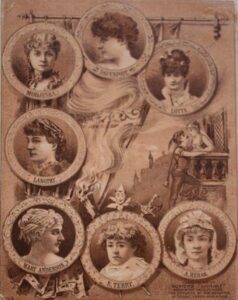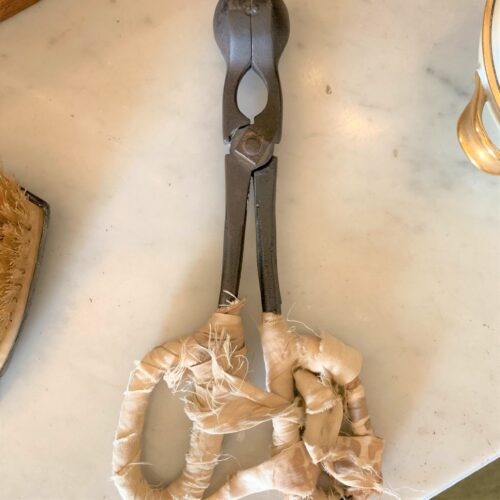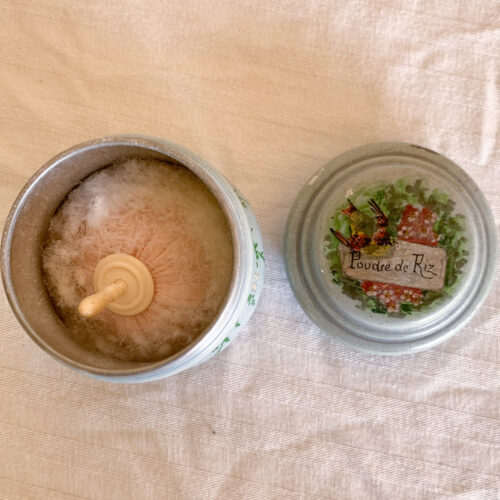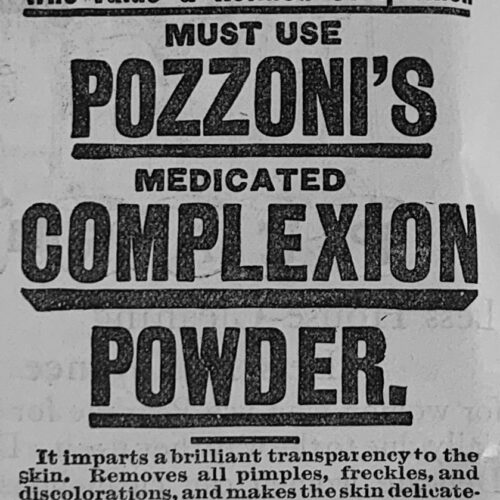Looking Back at Beauty and Cosmetics of the Past: 1870–1930
Introduction
Makeup products and cosmetic tools have come a long way from the 19th and early 20th centuries, evolving alongside beauty standards and new technologies. While most have changed, many beauty tools of today are still linked to their earlier counterparts. One of the main differences is that earlier manufacturers utilized glass and metal for their cosmetic jars, hairbrushes, and hand mirrors; whereas cosmetic containers today are often made from plastic. In the case of cosmetic powders and creams, there have been drastic changes in ingredients through the years, as well as growth in skin-tone inclusivity. This exhibit explores cosmetic tools and containers from 19th and early 20th century America, as well as beauty advertisements from the time, and how these products reflect the social standards of the time period.
Click on an image to explore objects within each exhibit case
Late 19th Century Beauty Standards
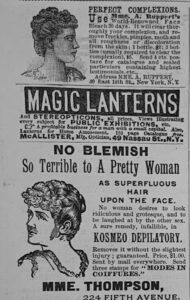
Peterson’s Magazine, 1890
Top: Advertisement for Mme. A Ruppert’s Bleaching Cream
Bottom: Advertisement for Kosmeo Depilatory
Advertisements reflect the beauty standards of this period, which prioritized fair, clear skin devoid of any blemishes. In the 19th century, it was looked down upon for American women to use cosmetics to achieve clear skin, society deeming it “artificial.” Because of this idea, skincare products were more common than makeup, with many creams and powders being marketed as “invisible” to align with society’s standards.
Many beauty advertisements claimed to sell cure-all products, with the ability to remove not only pimples but also wrinkles and freckles, while simultaneously creating a smooth complexion and rosy cheeks. Ingredients for cosmetic powders were harsh, with ingredients ranging from rice powder to lime, lead, and arsenic, which caused more damage to the skin.
Most of these beauty standards were non-inclusive, and catered to people with fair skin, rejecting people of color and those with darker skin or blemishes. Cosmetic powders also only generally carried shades for individuals with lighter skin tones, ignoring those with deeper skin shades.

